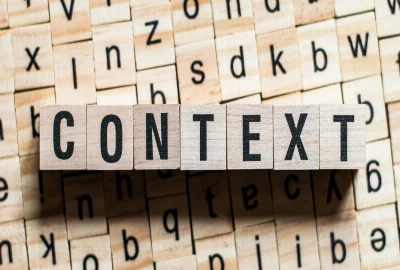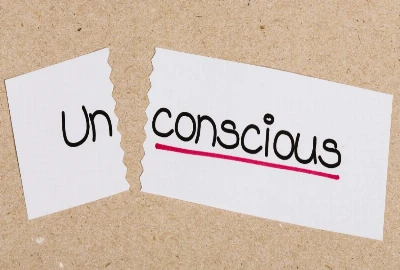Emojified Empathy: When Symbols Replace Sincerity

The Universal Language of Feelings
In the early days of the internet, emotion was difficult to convey. Messages often felt sterile or easily misunderstood. Then came emojis—tiny digital icons that promised to humanize text. What began as a playful way to add tone quickly evolved into a universal emotional shorthand. Today, over 10 billion emojis are sent daily, transcending language barriers and time zones.
Emojis revolutionized how we communicate. A single 😊 can soften criticism, a ❤️ can express affection, and a 😢 can signal empathy. They simplify emotional exchange in fast-paced digital interactions, creating a shared emotional vocabulary for an increasingly fragmented online world.
Efficiency Over Emotion
But convenience comes with compromise. Emojis compress complex feelings into simple symbols. They allow for quick responses, but not always thoughtful ones. Instead of saying “I’m really sorry you’re going through this,” we might send a single 😔 or 💔. The gesture feels empathetic—but is it genuine?
The Paradox of Connection
Emojis make us feel connected, yet their very efficiency risks emotional superficiality. As communication becomes faster and more visual, sincerity is often sacrificed for speed. This tension between expression and authenticity defines what we now call emojified empathy—a digital phenomenon where caring is performed through symbols rather than felt through words.
Emojified Empathy: The Performance of Digital Emotion

Defining Emojified Empathy
Emojified empathy describes the growing trend of using emojis as a substitute for genuine emotional engagement. It’s the quick reaction heart on a friend’s sad post, the 🙏 under a tragedy, or the crying face reply to bad news. These responses signal understanding but often bypass the deeper emotional labor that empathy requires.
While emojis can be a useful emotional cue, they also enable performative empathy—a form of interaction where the appearance of care matters more than the care itself. Social platforms reward visibility and speed, not depth, leading users to adopt quick, symbol-based responses as default expressions of concern.
Emotional Automation in the Attention Economy
Social media platforms encourage this behavior by integrating reaction features—like the “❤️” on Instagram or “😢” on Facebook. These tools simplify emotional response into measurable metrics, turning empathy into engagement. Over time, users are conditioned to equate digital gestures with emotional contribution, blurring the line between sincerity and convenience.
The Comfort of Symbolic Compassion
Sending an emoji offers comfort—to both sender and receiver. It relieves the discomfort of silence while signaling care. But this symbolic compassion risks emotional complacency. Instead of asking questions or offering support, we outsource emotional labor to icons, mistaking expression for empathy.
The Psychology of Symbols: Why Emojis Feel So Real

The Brain and the Emoji Effect
Neuroscientists have found that when people see emojis, the brain processes them similarly to real facial expressions. A smiling face emoji activates the same neural pathways associated with human connection. This explains why digital interactions feel emotionally satisfying—our brains interpret symbols as social cues.
However, this emotional recognition doesn’t equal emotional depth. Emojis mimic expressions, but they lack the nuance of human tone, timing, and context. A single emoji cannot capture the complexity of grief, love, or frustration—it can only approximate it.
The Illusion of Emotional Understanding
Because emojis trigger empathy-like responses in the brain, they can create a false sense of understanding. A friend might believe they’ve offered comfort with a quick ❤️, while the recipient might interpret it as detachment or indifference. Meaning becomes subjective, shaped by culture, personality, and relationship dynamics.
Digital Dependence and Emotional Simplification
As we grow accustomed to emoji-based empathy, we may lose comfort with direct emotional communication. It’s easier to send 🫶 than to say “I care about you.” Over time, our ability to express complex emotions verbally weakens. Emotional intelligence becomes externalized—encoded in digital symbols rather than lived through conversation.
The Social and Cultural Impact of Emojified Empathy

Cultural Differences in Emotional Expression
Emojis aren’t universal in meaning. For example, the 🙏 emoji may represent prayer in one culture and gratitude in another. Similarly, 😂 is the most-used emoji globally, but its interpretation ranges from joy to irony to discomfort depending on cultural context. This ambiguity complicates empathy, especially in multicultural digital spaces where tone and intent can easily be misread.
The Rise of Emotional Branding
Brands and influencers have harnessed emojified empathy to appear relatable and emotionally intelligent. Marketing campaigns use emojis to convey warmth, humor, or solidarity—like a quick ❤️ for a cause or 😢 for social awareness. While these gestures humanize corporate communication, they also commodify emotion, turning empathy into a branding strategy.
Public Grief and Emoji Activism
In moments of collective tragedy—such as natural disasters or social movements—emojis become tools for public empathy. The flood of 💔, 🕊️, and 🙏 reactions can create solidarity, but also emotional distance. By condensing grief into icons, digital mourning becomes both immediate and impersonal—a ritual of participation without sustained engagement.
Emojified empathy thus reflects a culture caught between connection and consumption. Our symbols help us feel together, but they can also mask the emptiness of surface-level solidarity.
From Symbol to Substance: Reclaiming Authentic Empathy Online

Slowing Down Emotional Communication
To counter the effects of emojified empathy, we must reintroduce intentionality into our digital communication. Instead of defaulting to emojis, take a moment to write a genuine message: “I’m here if you need to talk,” or “That must be really hard.” These small acts restore emotional depth and signal true care.
Combining Emojis with Meaning
Emojis don’t have to replace sincerity—they can enhance it when paired with thoughtful words. A ❤️ alongside a personal message feels human; a standalone emoji feels automated. Use symbols as emotional punctuation, not as the sentence itself.
Practicing Digital Emotional Literacy
Understanding how digital tools shape our empathy is key to using them responsibly. Recognize that the emotional shortcuts we take online affect real relationships. Reflect before reacting, and question whether your emoji is serving the person—or just maintaining the illusion of empathy.
Building Healthier Digital Spaces
Social platforms can also foster authentic connection by redesigning emotional tools. Rather than relying on reaction buttons, future digital environments might prioritize reflection—prompts that encourage users to write responses or engage in meaningful dialogue. True empathy requires time, attention, and vulnerability—all qualities worth defending in the age of instant expression.




